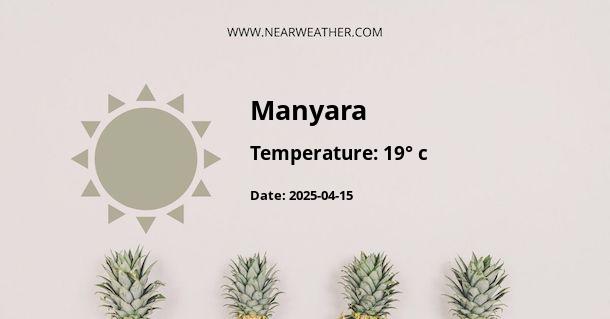Climate and Weather in Manyara Region, Tanzania
Located in the northern part of Tanzania, Manyara Region is known for its diverse landscapes, abundant wildlife, and rich cultural heritage. The region is home to Tanzania's famous Manyara National Park, which offers stunning views of the Great Rift Valley and is renowned for its tree-climbing lions and flocks of flamingos.
Understanding the climate and weather patterns in Manyara Region is essential for visitors and residents alike. In this article, we will explore the year-round climate, average temperatures, rainfall patterns, and other important meteorological aspects that define the weather in Manyara Region.
Geographical Factors
The Manyara Region is situated between the Gregory Rift and the Great Rift Valley, which greatly influences its climate. The region experiences diverse topography, including the slopes of the Rift Valley, the Manyara Escarpment, and the vast plains of the Maasai Steppe. These geographical features play a significant role in shaping the weather patterns.
Temperature
The Manyara Region generally has a warm and temperate climate throughout the year. The average temperature remains fairly consistent, with variations based on the altitude and time of the year. The region experiences a dry season and a wet season, each with its own distinct temperature range.
During the dry season, which occurs from June to October, temperatures range between 20°C (68°F) and 30°C (86°F). The hottest months are December to February, with temperatures occasionally reaching 35°C (95°F). The cooler months are June and July, with temperatures averaging around 20°C (68°F).
During the wet season, which runs from November to May, temperatures range between 25°C (77°F) and 30°C (86°F). The humidity levels are higher during this period, making it feel warmer than the actual temperatures. The coolest months are January and February, with temperatures averaging around 25°C (77°F).
Rainfall
The Manyara Region experiences a distinct wet season and dry season when it comes to rainfall. The wet season, typically referred to as the long rains, occurs from March to May. During this period, the region receives significant rainfall, with April being the wettest month.
The dry season, known as the short rains, occurs from November to December. Although the rainfall is less intense during this period, sporadic showers can still be expected. The months of June to October have the least amount of rainfall, making it the driest period in the region.
On average, the Manyara Region receives around 600-800mm (24-32 inches) of rainfall annually. The amount of rainfall can vary depending on the specific location within the region, with the western parts receiving more rainfall due to their proximity to the Rift Valley.
Wind Patterns
The Manyara Region is influenced by prevailing winds that blow from different directions throughout the year. During the dry season, the region experiences mainly northeasterly winds, which create relatively dry and sunny conditions.
During the wet season, the wind direction changes to southeasterly, bringing moisture-laden air from the Indian Ocean. These winds contribute to the formation of rain clouds and the subsequent rainfall in the region.
Climate Zones
The Manyara Region can be divided into different climate zones based on altitude and vegetation. The lower areas near Lake Manyara and the Rift Valley have a semi-arid climate, characterized by hot and dry conditions with sparse vegetation.
The higher areas, such as the slopes of the Rift Valley and the Manyara Escarpment, have a more temperate climate due to their elevation. These areas experience cooler temperatures and a more moderate climate throughout the year.
Conclusion
The climate in Manyara Region is influenced by its geographical features, including the Rift Valley and the Great Rift Valley. The region experiences a warm and temperate climate, with distinct wet and dry seasons. The average temperatures remain relatively consistent throughout the year, with variations based on altitude and time of the year.
The Manyara Region receives moderate rainfall, with the wet season occurring from March to May and the dry season from November to December. Prevailing winds also play a role in shaping the weather patterns, with northeasterly winds during the dry season and southeasterly winds during the wet season. The region can be divided into different climate zones based on altitude and vegetation.
Understanding the climate and weather in Manyara Region is essential for planning trips, safaris, and other outdoor activities. Whether visiting during the dry season to enjoy sunny days or during the wet season to witness the lush greenery, Manyara Region offers a unique and diverse climate that adds to the overall experience of the region.
A - Manyara's Latitude is -4.750000 & Longitude is 36.666672.
A - Weather in Manyara is 19° today.
A - Climate Conditions in Manyara shows overcast clouds today.
A - Humidity in Manyara is 89% today.
A - Wind speed in Manyara is 8.53 km/h, flowing at 119° wind direction. today.
